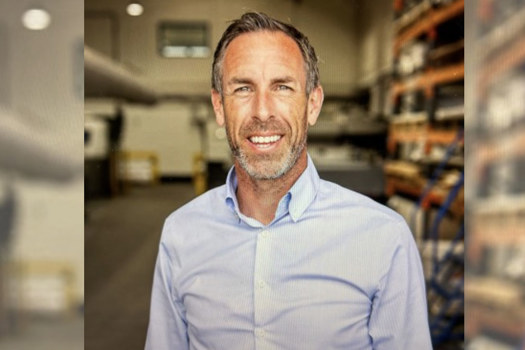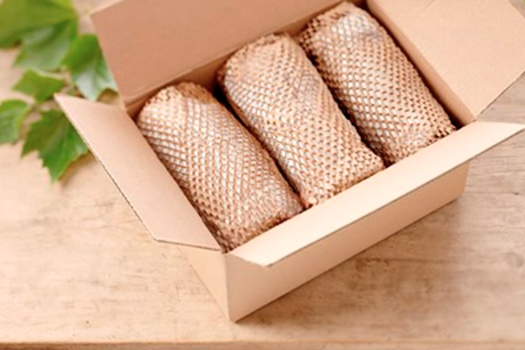Back in February, the packaging industry found itself in the eye of a media storm. The Local Government Association (LGA) delivered its verdict on waste and declared that excess food packaging was undermining householders' efforts to recycle more.
It concluded that supermarkets should stump up more cash in order to avoid council tax rises to pay for landfill. Such was the level of interest that the industry was handed unwanted coverage on the BBC, Sky News and ITV. Even Radio 5 Live hosted a phone-in on the subject.
While the LGA's concerns were dismissed as nonsense by many in the packaging sector, the evidence presented by the various media outlets suggested the industry is as wasteful as it has ever been. The reality is somewhat different. Packaging has been getting its house in order for some time and there are plans to make it even greener still in the future.
One of the central planks of the fight against packaging waste is the Courtauld Commitment. Launched in 2005, it is a voluntary agreement between the Waste and Resources Action Programme (Wrap) and major retailers, brands and suppliers. The aim is to reduce waste and packaging. The first target, zero growth in packaging, has already been achieved. The goal by 2010 is to deliver absolute reductions in packaging waste.
The initial driving force behind the reductions has been weight. Retailers and brands have been busily working with their suppliers to redesign their cartons and boxes to reduce the weight of packaging used.
Plans are already afoot to take this to the next level with details of the Courtauld Commitment Two likely to be unveiled at the end of the year. But how have these reductions been achieved and what are the likely options for Wrap and its partners moving forward?
Big-name supporters
A total of 41 retailers, brands and suppliers have signed up to the Courtauld Commitment and the list of signatories is impressive, with the likes of Asda, Tesco, Morrisons, Sainsbury's, Cadbury, Coca-Cola, Kellogg's, Nestlé, Heinz and Britvic all backing the initiative. There is plenty of evidence to show that their commitment is not just an empty gesture.
On the cartonboard front, several retailers and brands have made significant reductions, including Northern Foods, which changed the design of its Goodfellas pizza boxes and in doing so reduced the total weight of packaging used in this product by 4,000 tonnes per year.
Supermarket giant Morrisons has also been busy lowering the weight of its Prepared for You range. In total, it is using an estimated 390 tonnes less packaging materials per year.
But these reductions haven't just been driven by retailers - an important role has been fulfilled by the print suppliers themselves. An example of a major player in the cartonboard sector who has made big strides in reducing packaging for its carton clients is Chesapeake.
This Easter season, the company's design team reduced the weight of Easter egg packs, but ensured that they still stood out on supermarket shelves. The design process was not compromised, but the packs used less material.
A good example of this process was its work on Green & Black's Easter carton. Working in tandem with Green & Black's marketing team, it came up with a ‘bag-shaped' carton and reduced the weight of the pack by more than 60%. On top of that, it was able to save more than 70 tonnes of plastic and cardboard packaging. Its clients Cadbury and Mars also benefited from significant reductions in the weight of their Easter egg packaging through similar processes.
The company promoted the use of single-material packaging for products that have traditionally used mixed materials, such as food sealed in PET thermoformed packaging and then wrapped in a carton or a printed cardboard sleeve - using only one material makes it easier for the consumer to recycle. Dispensing with PET thermo-forming has not only reduced the amount of material used, but it has also led to cost savings for Chesapeake's clients.
Reductions and recycling
DS Smith Packaging has also been busy helping to reduce its customer's packaging. Like Chesapeake, it focused a lot of its efforts on packaging for Easter eggs - in this instance for Thorntons. The company was able to reduce the overall packaging by 40% and 70% of the new boxes contained recycled content. The pack was also 100% recyclable and uses a recycled fluting that has been specially treated to withstand chilled storage conditions.
Andy Dawe, head of retail programmes at Wrap, says that, as these examples show, suppliers have a significant part to play in reducing the levels of packaging. Their input will also help to shape future environmental policy, with dialogue already underway, according to Dawe.
"We had a meeting with the cartonboard and corrugated sector last month and we are developing a work programme to address the issues and concerns that they have voiced. We have to ensure there is a collaborative approach."
Getting everyone pulling in the same direction will be vital if the next stage of the Courtauld Commitment is to be achieved. A plan is being put in place for post-2010 and Packaging Federation chief executive Dick Searle is adamant that it needs to be reshaped from its existing targets.
"We can't just carry on with weight as a sole determination of progress," he warns. "There is talk of a move towards carbon, but that is one issue of many - the environmental impact is wider. The post-2010 commitment needs to look at the overall product impact. We recently had a meeting with the Courtauld Commitment signatories to talk about several areas, such as the pros and cons of recycling. The overall approach needs to be right. It's not quite a case of back to the drawing board, but the next stage needs to be sensible."
New goals
The signs are that Courtauld Two will be extended and will cover secondary and tertiary packaging. A final decision on what the targets will be post-2010 are expected by the end of the year and Dawe confirms that C02 emissions are likely to form part of the new commitment.
"It has moved on from meeting landfill targets - we still have to meet them, but the focus is also on combating climate change," he adds.
Packaging suppliers can make a difference in this area as well. For Snickers and Mars, DS Smith produced a single corrugated pack to contain the products. A heavy microflute grade enabled the pack to exceed 400kg under compression. The upshot was that this increased the number of units that could be stacked on each pallet from 216 to 270. DS Smith reckons that this has helped cut freight costs by 20% - a reduction of around 270 lorry trips.
While there is plenty of evidence that the packaging sector is pulling its weight in terms of green issues, that message doesn't seem to be getting through to the media and, more alarmingly, consumers.
The LGA's report only served to highlight the problem that Wrap and the industry as a whole faces. "Reports and media coverage like that are very frustrating for the signatories of the commitment," agrees Dawe.
Equally frustrating are the varying degrees of recycling facilities on offer throughout the country, with some local councils boasting the capability to recycle far more materials than others. But, rather than going toe-to-toe with bodies like the LGA, Wrap believes that working with them can be more beneficial.
"There does need to be more consistency," says Dawe. "We have, for a long time, been working with local authorities to ensure that change does happen, but you have to remember that five years ago the infrastructure was different. Progress has been made, but in an uneven way."
Perhaps, because progress has been so uneven, the message of packaging's green progression hasn't completely trickled down to consumers. Stories about wasteful packaging have been appearing in the papers for years, but the other side of the tale, the good side, is rarely told.
However, if the national newspapers choose to scratch beneath the surface, they will find that UK packaging printers are making great strides to reduce their customers' impact on the environment and that rather than being seen as pariahs, they ought to be recognised as trail-blazing environmentally aware operators.
View the PACKAGING LEAGUE TABLE
COMMENT
Packaging waste
It has often been said that packaging - be it in the form of cartons, cans or plastic bags - is an easy target for the green lobby.
Packaging is in everybody's hands many times every day. And using fewer plastic bags is relatively easy to do; so is reducing the size of, say, a cartonboard sleeve on a tray of sausages.
Nevertheless, the progress in reducing weight that has been achieved through the Courtauld Commitment should be seen as a success story for the industry. Measuring a pack's environmental impact by its weight alone is an imperfect system, as it penalises materials such as glass and metal which are heavier than, say, plastic, but have far better recycling rates.
Still, Courtauld has focused the minds of many retailers, brands and packaging suppliers to make their impact smaller.
The challenge for Courtauld Two will be to iron out those imperfections without making the measurement system too complicated and too expensive to be implemented. Concerns have been raised that more effort could end up being spent on proving compliance with the new measurement than in actually reducing the environmental impact of our packs.
Whatever happens, we must not lose sight of either the goal of improving our environmental performance and we must not forget the fantastic work that has already been done. Getting those messages through to the public and the green lobby is, sadly, another question entirely.
Josh Brooks, editor of PrintWeek sister title Packaging News









